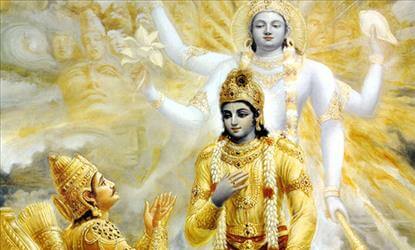The Bhagavad Gita is not merely a dialogue that took place in the remote past between two well known epic characters in the Mahabharata. It is much more than that. It symbolizes the external dialogue that goes on in the recesses of every striving soul. God speaks to us as Krishna spoke to Arjuna, if only we tune our ears and try to listen to His voice.
Therefore if every reader of the Gita brings to bear upon its sacred verses his own inward life of fears doubts and hopes, he will see at once that it is a living dialogue between the human soul and the Divine Spirit. Gita in the plenary sense in which it was first employed by the great Teacher. This is especially true of the word Yoga which forms the key to this scripture.
Yoga has now technically come to mean thought control. But the word is used in the Gita in its primary sense of union or fellowship with God. The answer which the scripture gives may briefly be said to lie in four words as Bhuddhi, Karma, Bhakthi and Jnana.
The Gita is a gospel of Karma Yoga or of Jnana Yoga or of Bhakthi Yoga or of Jnana Yoga. The whole is greater than the part. The Gita is a Gospel of yoga or fellowship with God. And moreover it is a gospel in which we are finding a burning plea for religion in common life. That is why it is addressed to a soldier in the battle field, it comes home to all of us. It comes home to the tiller in his field, to the merchant in his shop, to the lawyer in his chambers and to the scholar in his study. It teaches us the simple lesson of Yoga or union with God and bidding every one of us to look upon his duty as something sacred, something inviolable.






















